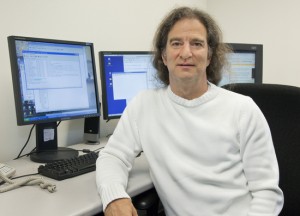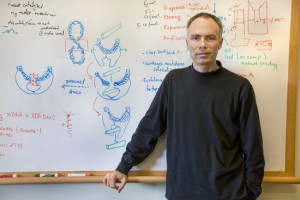The National Academy of Sciences announced the election of two Berkeley Lab researchers to this year’s class of 84 new members and 21 foreign associates from 14 countries. They were elected in recognition of their distinguished and continuing achievements in original research.
Representing Berkeley Lab this year are James Berger from the Physical Biosciences Division and James Sethian from the Computational Research Division.
The NAS membership is one of the highest honors given to a scientist or engineer in the United States.
At Berkeley Lab, Sethian leads the Mathematics Group in the Computational Research Division. The group develops new mathematical models, devises new algorithms, explores new applications, exports key technologies and trains young scientists in support of the Department of Energy’s research mission.
The group uses mathematical tools from areas in mathematics, physics, statistics and computer science, and focuses on problems that are both technologically interesting and mathematically challenging, and form a set of interrelated computing methodologies and applications in support of the DOE energy mission.
In 2008, Sethian was elected to the National Academy of Engineering. He is also the recipient the 2004 Norbert Wiener Prize in Applied Mathematics, which is awarded every three years jointly by the American Mathematical Society (AMS) and the Society for Industrial and Applied Mathematics (SIAM), for his work on level set methods and other applications.
Sethian holds a joint appointment as a professor of mathematics at the University of California, Berkeley.
James Berger is a biochemist and structural biologist who holds joint appointments with Berkeley Lab’s Physical Biosciences Division and University of California Berkeley’s Department of Molecular and Cell Biology. He has made extensive use of Berkeley Lab’s Advanced Light Source to study protein machines and develop models that help explain DNA replication, chromosome superstructure and other essential nucleic acid transactions. He was elected to the 2012 class of the American Academy of Arts and Sciences and in 2011 received the National Academy of Sciences Award in Molecular Biology “for elucidating the structures of topoisomerases and helicases and providing insights into the biochemical mechanisms that mediate the replication and transcription of DNA.”
Those elected today bring the total number of active members to 2,179 and the total number of foreign associates to 437. Foreign associates are nonvoting members of the Academy, with citizenship outside the United States.

